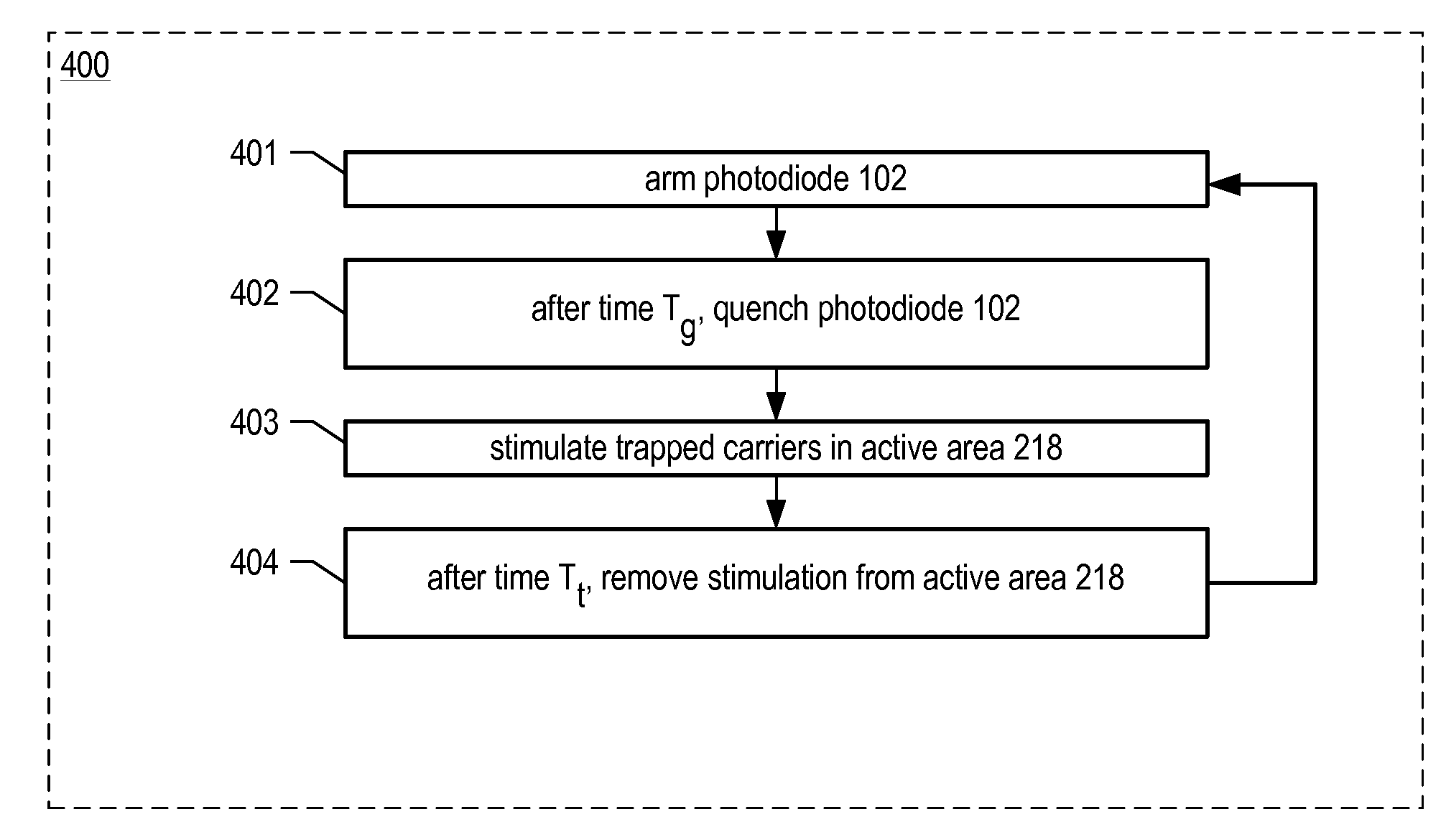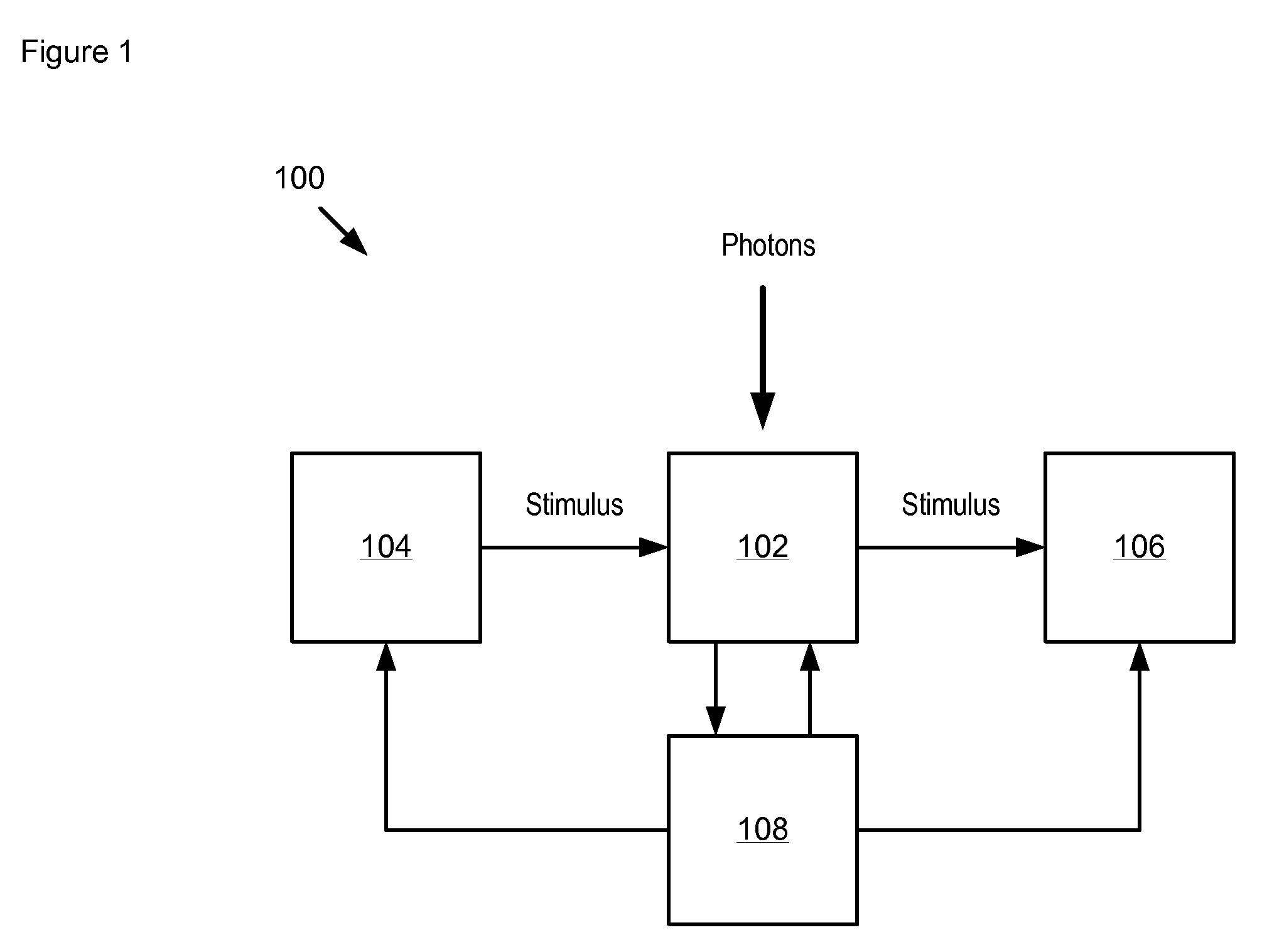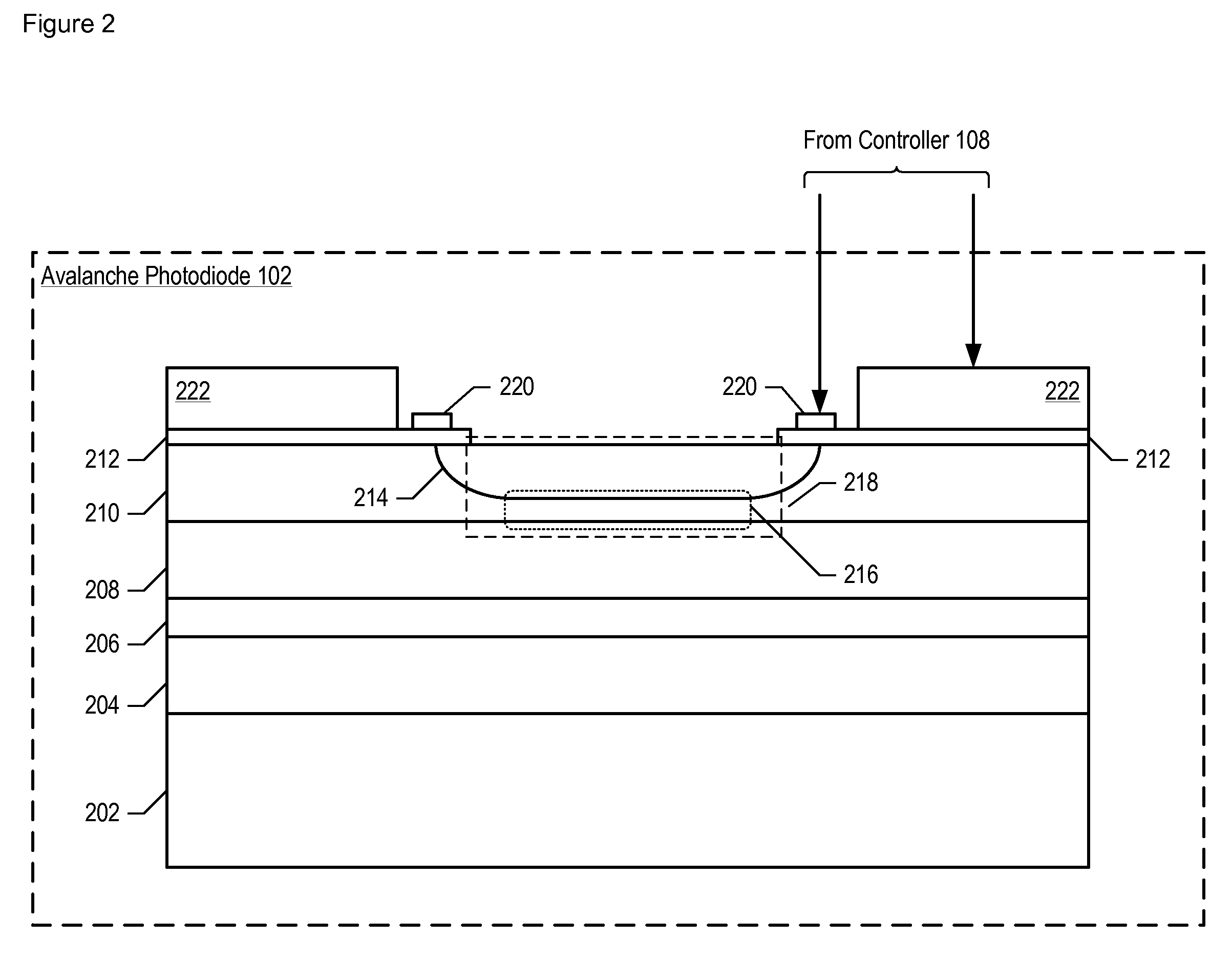Apparatus comprising a single photon photodetector having reduced afterpulsing and method therefor
a single-photon, afterpulsing technology, applied in the direction of optical radiation measurement, instruments, x/gamma/cosmic radiation measurement, etc., can solve the problem of high dark count rate of prior-art single-photon photodetectors
- Summary
- Abstract
- Description
- Claims
- Application Information
AI Technical Summary
Benefits of technology
Problems solved by technology
Method used
Image
Examples
Embodiment Construction
[0023]The following terms are defined for use in this Specification, including the appended claims:[0024]Monolithically-integrated means formed either: (1) in the body of a layer or substrate, typically by etching into the layer or substrate or; (2) on the surface of the layer or substrate, typically by patterning layers disposed on the surface.[0025]Thermal-cycling means temporarily changing a temperature to cause an effect. An example of thermal-cycling is the rapid-thermal annealing of a substrate to induce crystal growth or stress relaxation.[0026]Pulse means a brief sudden change in a normally constant quantity. Examples of pulses include, without limitation: (1) a thermal pulse, wherein a short rapid increase in the temperature of an element or portion of an element is produced; and (2) a voltage pulse, wherein a short rapid increase in a voltage is produced.[0027]Multiplication region means a region of an avalanche photodetector wherein avalanche gain predominantly occurs.
[00...
PUM
 Login to View More
Login to View More Abstract
Description
Claims
Application Information
 Login to View More
Login to View More - R&D
- Intellectual Property
- Life Sciences
- Materials
- Tech Scout
- Unparalleled Data Quality
- Higher Quality Content
- 60% Fewer Hallucinations
Browse by: Latest US Patents, China's latest patents, Technical Efficacy Thesaurus, Application Domain, Technology Topic, Popular Technical Reports.
© 2025 PatSnap. All rights reserved.Legal|Privacy policy|Modern Slavery Act Transparency Statement|Sitemap|About US| Contact US: help@patsnap.com



